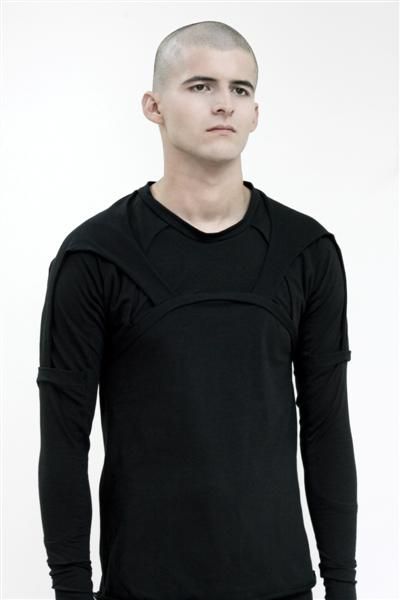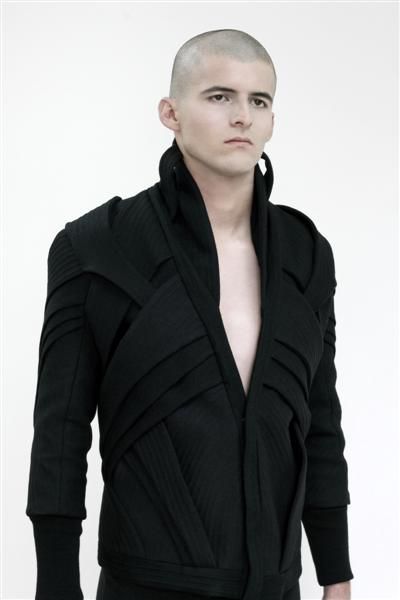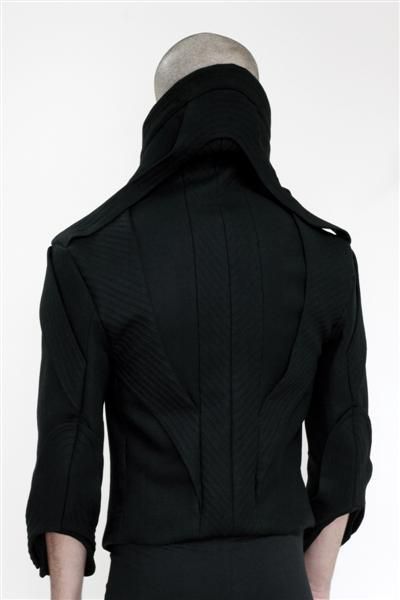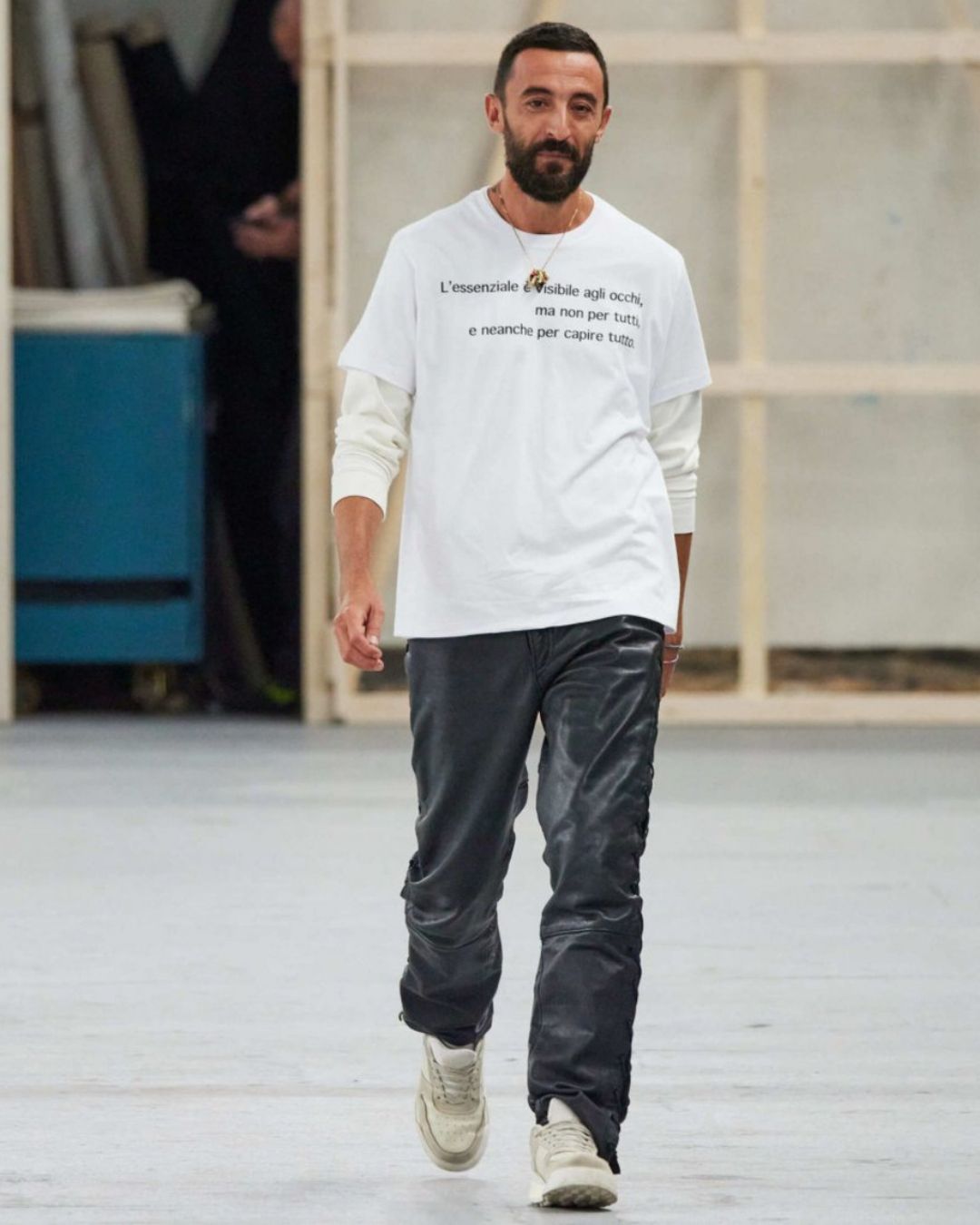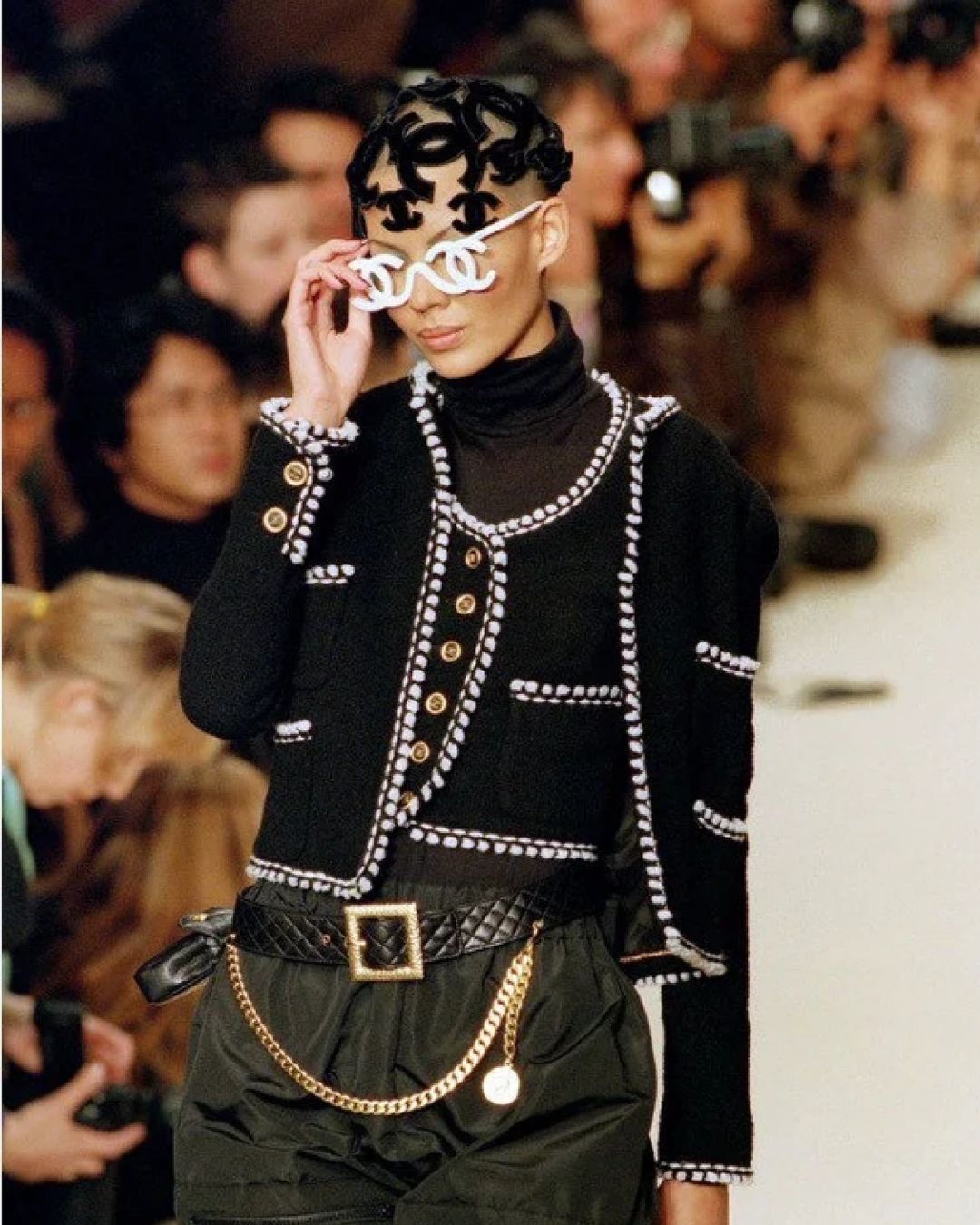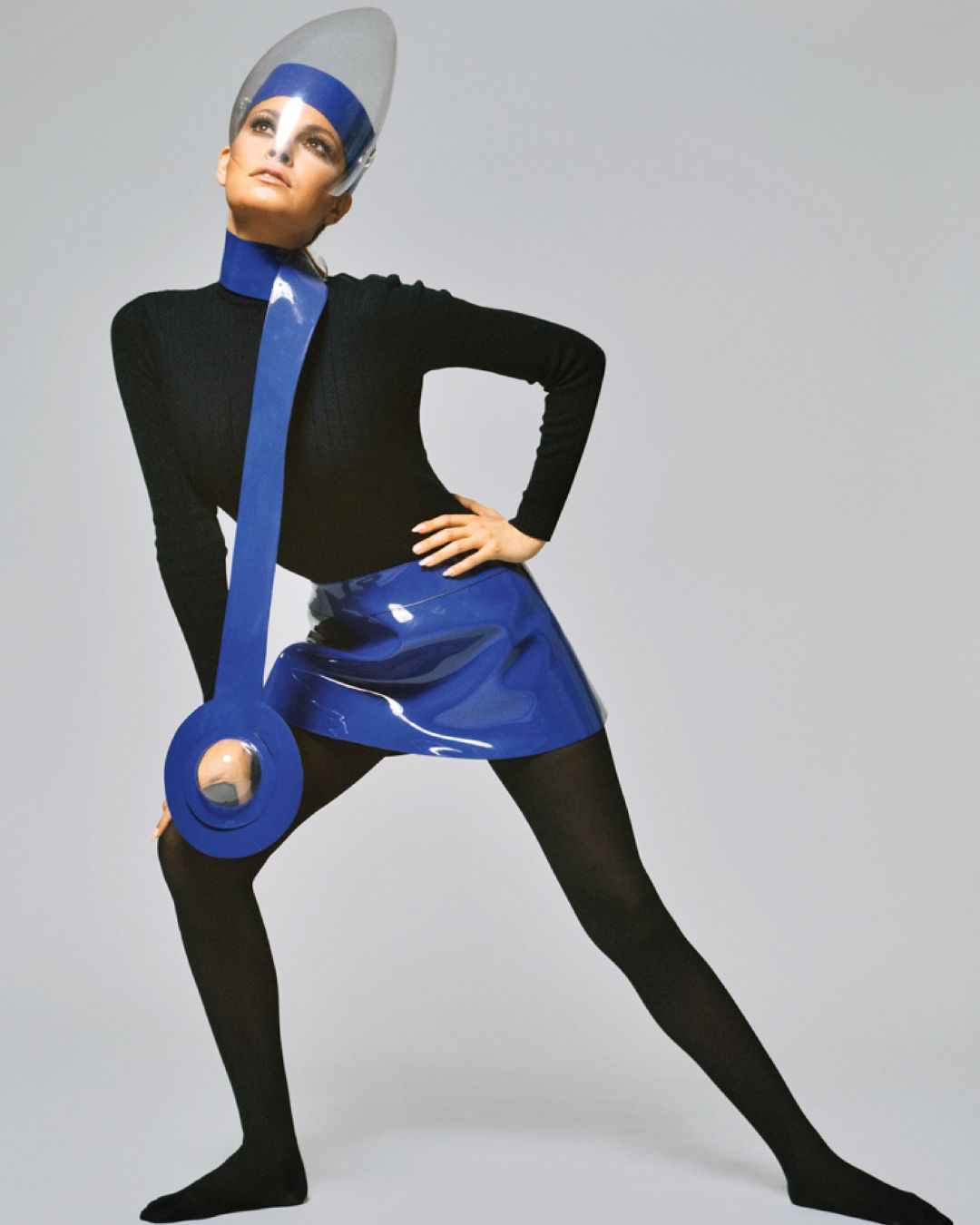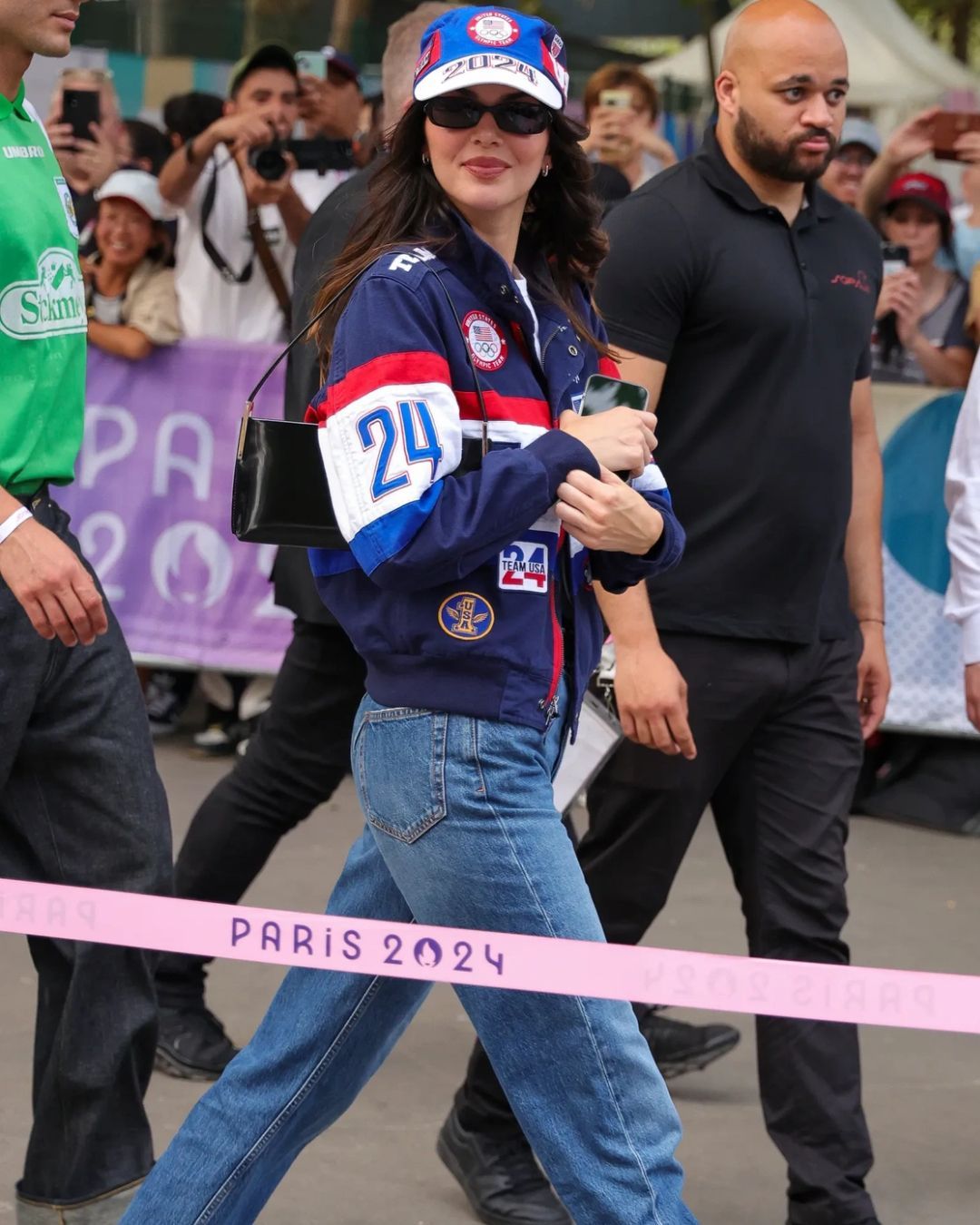
When the body
Intervistare Nahúm Villasana di Architectural Clothes, è stata per me un’esperienza davvero interessante. E non solo per le sue creazioni che sono belle proprio da vedere, anzi, da capire, perchè il mio è stato un interesse che ha trasceso il lato estetico. Ciò che mi ha colpito è stato il suo interesse per il corpo, il suo studio delle forme e delle linee, la sua capacità di creare ciò che non c’è attraverso la geometria ed i volumi. Sentire parlare questo 23enne messicano delle sue creazioni, così anomale ma così razionalmente concepite ed illustrate, mi ha fatto capire per un attimo come ci si deve sentire quando si crede realmente in quello che si fa, anche quando si è consapevoli che almeno inizialmente si è gli unici (o comunque uno dei pochi ) a comprenderlo. Nahúm Villasana ha risposto alle mie domande con la posatezza di chi è abituato a dare spiegazioni per lavoro, essendo lui anche professore alla Escuela de Diseno de Baja California, dove ha studiato e dove adesso insegna Storia del Costume. E questo è quello che mi ha detto....
Cos’è lo stile per te?
Personalmente credo che lo stile venga fuori come una combinazione o un sommario dei diversi modi di fare qualcosa e che sono una peculiarità di una persona. Come un modo personalizzato di fare qualcosa e di esprimerlo, come se la persona provasse a riflettere una individualità certa, distinguendosi proprio attraverso questo metodo. A dispetto dell’altra faccia dello stile stesso, come il “Life Style”. E anche il Life Style risponde a questa costante, perché cerca di rappresentare le “caratteristiche” di un determinato modo di vivere.
Qual è la tua mission?
Sto ancora lavorando alla mia linea per farsì che abbia una faccia ed uno stile. Progetto di continuare con il mio lavoro e poi introdurre la linea femminile nella quale potrò lavorare anche con altri elementi che mi piacciono molto ma che non sono molto usuali nell’abbigliamento maschile. Voglio estendere la mia linea in più posti ed a più persone, questa è la mia missione per ora.
Il corpo è la mia ispirazione primaria, cerco di riflettere l’aumento o il volume di alcune sue determinate parti. Io non immagino o creo vestiti prima di pensare al corpo. Le due cose vanno insieme.
Parlaci delle tue collezioni “Vol.1” e “Vo.2”. Cos’è l’ “equipaggiamento tecnico” di cui parli nel tuo sito?
Stavo pensando di posizionare linee diverse attorno al corpo, in alcune aree come le spalle, il torso, il collo, per rendere il contorno del corpo più evidente. Ecco perché ci sono alcuni vestiti per i quali occorre interpretare il corpo. Come i colli e le spalline plissettate, e le bande elastiche.
Parlaci della tua collezione “The Armored Body”. Da cos’è che ci dobbiamo proteggere?
Stavo riflettendo sul principio basico dell’armatura, che risiede nel proteggere il corpo. Può accadere per scopi bellici, per sport, per proteggere il corpo sul lavoro, e vi sono anche diversi tipi di armature che esistono nel mondo e che provengono da diverse civiltà. Nella realizzazione e nel design dei vestiti e anche nelle foto della collezione, ho cercato di riflettere un certo senso di protezione nei confronti di chi li indossa.
Qual è stato il processo creativo dietro la collezione “Bisector Human”?
Vedo la “bisettrice” come uno spazio tra chi indossa i vestiti ed i vestiti stessi. In questa prospettiva, dovrebbe essere uno “strato”; ecco perché nella review della collezione ho parlato di “strato invisibile”. Ho usato strati di tessuto e ho amplificato le dimensioni di colli e giacche per far sembrare che vi fosse molto spazio al loro interno. Ho continuato con le linee nei tessuti ed esse sembravano allungare le componenti e i tagli delle giacche. Ho introdotto un nuovo pezzo che è una cintura/gonna per uomo, un pezzo che non avevo mai provato prima.
Quali sono le idee e dettagli che catturano la tua attenzione quando guardi I lavori di altri designers?
Quando guardo i lavori degli altri designers, mi piace guardare e prestare attenzione ai diversi elementi e le risorse sulle quali basano il proprio lavoro. Alcuni sono molto bravi nella costruzione, i loro lavori possono essere molto semplici o complessi, e canalizzano la loro enfasi nel cucire o nel dare i punti. Mi piace anche quando gli altri designers implementano nuove tecnologie rendendole parti del tessuto, o rendendo un capo di abbigliamento come qualcosa di utile per un mondo futuro. Ci sono alcuni designers il cui lavoro non è intricato o che la gente non vede come molto rilevante, ma poi vien fuori che sono molto bravi con le combinazioni di stampe e textures, o a mixare tessuti. Ad esempio i designers che sono più minimalisti, mi piace il loro modo di fare vestiti, il modo in cui li concepiscono per adeguarsi al corpo in modo puro, senza sovvertire troppo le singole proprietà dei tessuti che usano. Poi ci sono i designers che fanno parte del regno dell’Haute Couture, che si piazza proprio su un altro livello. Ma ciò che colpisce di più la mia attenzione, è la diversità nel comunicare.
Sogni segretamente di collaborare con qualche brand o artista in particolare?
Si, anche se non ho ancora pensato con chi! Penso che collaborerei volentieri con Unercover o Comme des Garcons.
What is style for you?
As a personal definition, I find Style to come as a combination or summary of the different ways of doing something, that are distinctive of a particular person. Like a customary way of doing something and then expressing it, as if the person is trying to reflect a certain individuality and giving that method features of his own.
Despite the fact the other side of the Style itself, like the "Life Style" for example. And even Life Style itself falls into that constant, as it tries to represent how are the "characteristics" of a certain way of living.
What is your mission?
I'm still working in my line to make it have a face and a style.
I plan to continue with my work and then introduce the female line in which I could also work with some other elements that I really like, but that are not very usual for a male wearer.
I want to extend my line to more places and more people, that's my mission right now.
Designers usually create clothes to cover the body. Otherwise, it looks like you use the body to fulfill the clothes.
Why is this geometry so important to you?
The body is my primary inspiration, I try to reflect the augmentation, or volume of certain parts of it.
I don't envision and make the clothes first, without thinking of the body. They're together.
Talk us about your collections "Vol. I" and "Vol. II". What is the technical equipment you talk about on your website?
I was thinking of placing different lines around the body, in some areas like the shoulders, the width of the back, the neck, to make the outline of the body, more evident. That's why there are some of the clothes which need the body in order to b interpreted. Like the pleated collars, the pleated shoulders, the elastic bands also.
Talk us about your collection "The Armored Body". What we have to protect from?
I was thinking of the basic principle of the armor which is to protect the body. Whether it is for belic purposes, sports, protection at work, and also the different kinds of armor that exist around the world, coming from different civilizations.
In the work and design of the clothes and also in the pictures for the collection, I tried the reflect a certain sense of protection for the wearer.
What has been the creative process behind "Bisector Human"?
I see the "bisector" as the space between the wearer and the pieces of clothing, in this perspective, it should be "a layer"; that's why I stated that of the "invisible layer" in the review of the collection.
I used layers of fabirc and I did oversized collars and jackets to make them look like there's a lot of space in between. I continued with the lines in the fabirc and the seams alongside the pieces and cuts of the jackets. I introduced a new item which is like a belt/skirt for men, a piece which I had never tried before.
What are the most interesting ideas and details that draw your attention when you look at other designers' work?
When I see the work of other designers, I like to stare and pay attention to the different elements and resources they base their work on.
Some of them are very good at the construction, whether their work is very simple or intricate, having their emphasis on tailoring and stitching.
And I also like when some other designers implement new technologies within clothing, being part of the fabric itself, or the whole piece as part of something useful for a future world.
The there are the other designers whose work, is not so intricate or that people don't see it very relevant, but when it comes to the combination of prints and textures and mixing fabrics, they're very good at.
For example the desginers that are more minimalistic, I like their way of making clothes, how they look their clothes, to fit the body in a pure way, without subverting so much the singular properties of the fabrics they use.
Also the other group of designers of the Haute Couture reign, which is stated in a whole different level.
What captures my attention from all this minds, despite the fact of their modes of construction and referential, is their diversity in language.
Do you have secret dreams about collaborations with some particular brands or artists?
Yes I think would like to collaborate with other designer or artists.
I haven't think of someone who would be, though. In my mind hehehehe.
I think I would like to participate with Undercover, or COMME des GARCONS in some way.












































